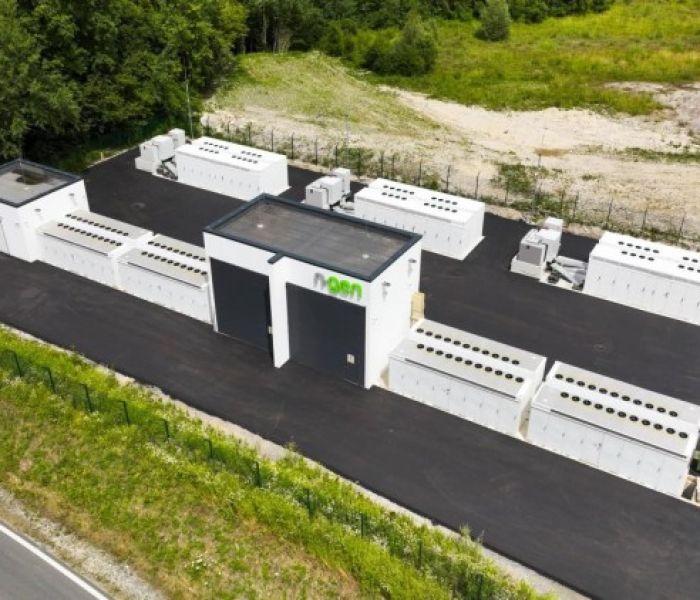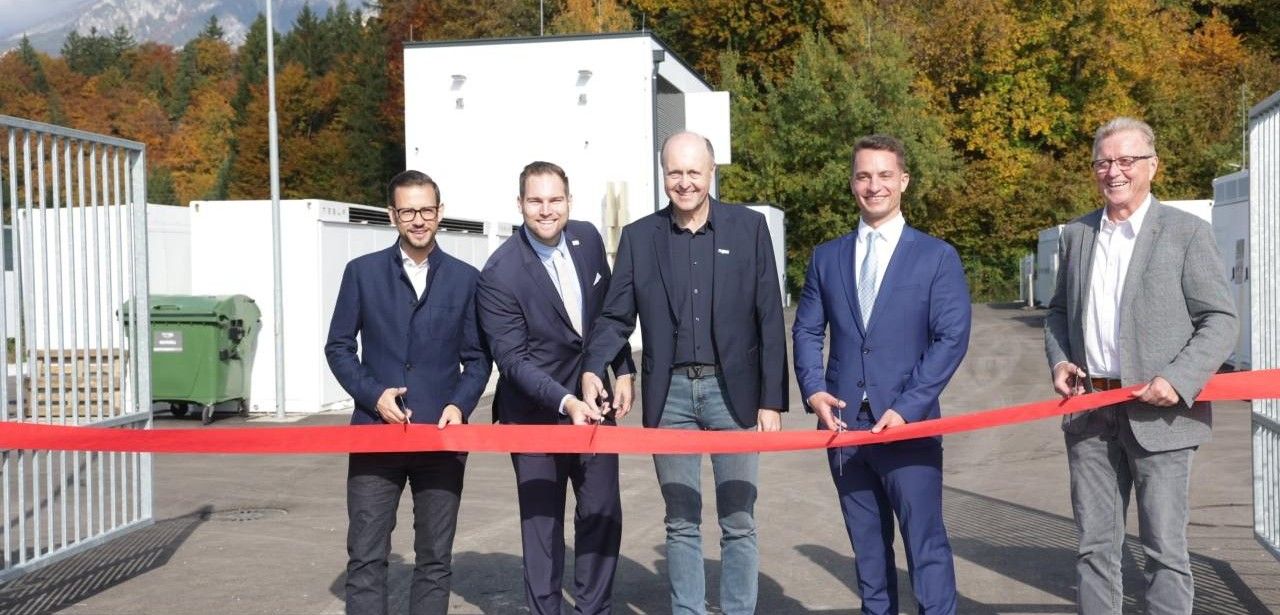Commissioned by NGEN Group in Arnoldstein-Gailitz, the battery storage facility delivers 21.9 MW of power and 43.8 MWh of capacity after its 2025 expansion, making it Austrias largest supporting storage plant. The installation enhances network stability, optimizes integration of variable renewable energy, and enables peak shaving and frequency regulation. Operating carbon neutrally, it strengthens supply resilience and reduces electricity costs through load shifting and intraday and day-ahead trading and offers grid services.
Table of Contents: What awaits you in this article
NGEN Group commissions Arnoldstein-Gailitz battery plant after first phase

Tour durch das Kraftwerksgelände mit CFO Matija Dolinar (Foto: Thomas Hude)
In May 2023, following the successful completion of its initial expansion phase, NGEN Group commissioned the Arnoldstein-Gailitz battery storage facility. The projects first stage delivers 21.9 MW of power and 43.8 MWh of energy storage, and remains on track to double its output by 2025 with an identical second phase. Upon full completion, this facility will become Austrias largest grid-serving battery installation dedicated to bolstering public electricity network stability, improving regional resilience.
Proprietary software controls peak loads, provides reserves, optimizes trading
Using its proprietary control software, the facility actively mitigates peak load events by dynamically adjusting output and storage parameters while ensuring automatic activation of reserve capacities to maintain frequency and voltage stability. It leverages real-time market data to optimize energy transactions across intraday and day-ahead platforms, maximizing economic return. Advanced redispatch algorithms detect and alleviate grid constraints by rerouting power flows locally, thus contributing to network reliability and preventing overloads.
Compact design minimizes landscape impact, enables rapid urban deployment

Das Batteriespeicherkraftwerk Arnoldstein-Gailitz (Foto: Stefan Müller)
The compact design of the storage facility minimizes visual impact on the landscape and enables rapid installation in urban environments. Simultaneously it delivers renewable power to electric vehicle charging stations and industrial clients, reducing electricity bills through strategic load shifting. By storing generation and deploying it during peak demand, system cuts CO2 emissions and ensures renewable supply around the clock. Its backup functionality guarantees blackout resistance even grid failure conditions.
Carinthia pioneers resilient energy infrastructure with gap-closing solar storage
Matija Dolinar and Andreas Ljuba underscore Carinthias emergence as a benchmark in resilient energy infrastructure through this project. By linking power generation with consumer demand, the facility eliminates intermittency challenges, enabling continuous solar energy availability and bolstering grid reliability. Its integrated energy storage smooths fluctuations, maintains peak supply, and further enhances energy security. Plans are underway for a new Upper Austria facility with four times the capacity to extend resilience.
NGEN Group delivers full-service energy storage and trading expertise

Miran Slobodjanac, Generalkonsulin der Republik Slowenien (Foto: Thomas Hude)
The NGEN Group, headquartered in Zirovnica, Slovenia, employs over 200 staff across nine countries to deliver a full-service solution encompassing engineering, procurement, and construction (EPC) expertise, battery storage technology, and advanced automated power trading capabilities. Leveraging its proprietary multimarket connectivity platform, the company optimizes flexibility assets by aggregating and dispatching balancing reserves across intraday and day-ahead markets, maximizing revenue streams, reducing operational costs, and reinforcing grid stability, enhancing operational reliability.
Arnoldstein-Gailitz storage plant accelerates energy transition with smart software
The Arnoldstein-Gailitz battery storage facility integrates advanced hardware with intelligent software to support expansion of renewable energy. By operating at high capacity, it smooths voltage and frequency variations, optimizes market transactions through peak-shaving strategies and reduces operational costs. The installation bolsters grid stability, improves supply security and cuts CO? emissions. Serving as a blueprint for Austria and Europe, this project underpins sustainable, decentralized electricity infrastructures needed for future energy resilience.














